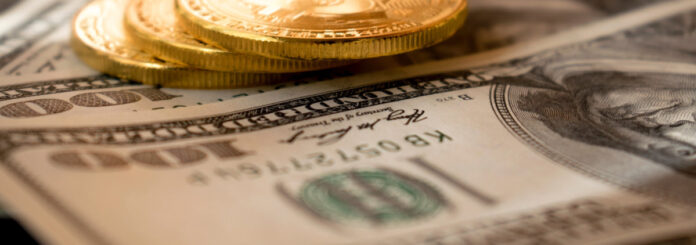Inflation jumped to 0.9 percent in October to 6.2 percent annually (exceeding projections), confirming just about every consumer’s belief that prices continue to rise and inflation is anything but transitory. Fuel prices, for example, were up 12.3 percent for the month, 59 percent for the year, while used car prices jumped 2.5 percent in October and 26.4 percent for the year.
According to government reports, inflation was up across the board and included items large and small, from cars and rent to food and furniture. In the categories tracked, only airline fares and the price of alcohol dipped.
At the same time prices were rising, wage inflation was sinking. That means if you feel like each paycheck buys less, you are correct. It does. People living from paycheck to paycheck are going to feel the pinch and have to buy less expensive food or cut back spending elsewhere as it becomes more difficult to keep up with the daily cost of living.
Business Raising Prices
The same CPI report also showed that 53 percent of businesses raised prices in the third quarter, a number higher than anything seen in the past 40 years.
Tom McTaggart, a pricing consultant and the founder of PricingAudit.com, is quoted in the Wall Street Journal as saying:
“It’s a never-ending loop—by the time you’ve implemented one price increase, you’re already ready to implement a new one,” said Mr. McTaggart, who is based in Philadelphia. “It’s like trying to hit a moving target while you’re standing on a moving platform.”
… He added his clients’ accounting systems aren’t designed to update such a range of rapidly rising costs. And since it can take a while for these price changes to trickle through the supply chain to the consumer, Mr. McTaggart expects there will be more pressure on consumer prices to come.
That’s the spiral affect you have to worry about with inflation. It feeds on itself as it gets passed through the supply chain. As raw materials, transportation, and labor costs rise, the accumulated costs get passed on to the next step.
More to Come
I expect things will get worse before they get better. That spiral can either slow down or it can increase. What the country has to avoid is runaway inflation, which can turn into hyperinflation.
After a couple years of inflation, deflation and stagflation often set in, first in a few categories, then spreading to others. Often in combination with a recession. The result is financial misery for much of the population until things finally smooth out again and both the economy and the average citizen recover. This could take five years or more. We could also see a rollercoaster of ups and downs as the government over corrects.
Socialist governments historically try things like price freezes, wage freezes, and other government control that hurt manufacturers, retailers and employees. They embark on large, often pointless, public works projects to provide employment, or they give money away via stimulus checks, unending welfare programs, or so-called “basic income,” which proves a grant of money to everyone. By injecting more money into the economy, they create more inflation.
The solution is less regulation, not more.
We Need Free and Fair Markets
When both the buyer and the seller know the value of a dollar, market forces will find equilibrium. If the item is in short supply, the price will rise due to supply and demand. If the item is a commodity and there is a glut on the market, the price will fall until manufacturers curtail production. Markets can be self-regulating and balancing, if we let them. Socialist, however, think they know better and always interfere with the free market, often seeking to redefine “fairness” to meet their criteria.
But when you artificially change the balance, it has repercussions. When you make more money available, by giving away money as stimulus or by creating money and pumping it into the economy via artificially low interest rates, the equation can only balance itself by raising prices or when manufacturers opt out.
For years, we have had these efficiency increases that have produced more output. This extra production absorbed much of the excess money the government has pumped into the system. When production shot down during early 2020, at the same time they increased the stimulus and money pumping, the equation became unbalanced. The result was rising prices. Shortages caused by the shutdown compounded this, and inflation got worse. There are a record 111 ships backed up at the ports of Los Angeles and Long Beach. Shortages and supply chain issues will not be over any time soon.
One Solution is Less Regulation
The best thing the government could do is to get out of the way and let the problem resolve itself. California needs to relax its air quality controls that prohibit trucks built before 2005 from operating in the state. The Feds need to relax their mandates and allow more drivers. Trucking companies need to pay more. Ports need to eliminate lines and wait times. Customs needs to speed container clearance. Warehouses need to be more flexible and pay lumpers and other staff more per hour.
When Ronald Reagan and Donald Trump reduced regulation, the economy grew and consumers benefitted. The cost of doing business today is ridiculous. Imagine having to deal with the threat of OSHA fining you $14,000 if an employee buys a fake vaccination card, or having to let valuable, experienced employees go because the president says so.
Don’t even get me started on taxes.
Just make sure you are as prepared as you can be, financially and physically, because we’re in for some turbulent times.







